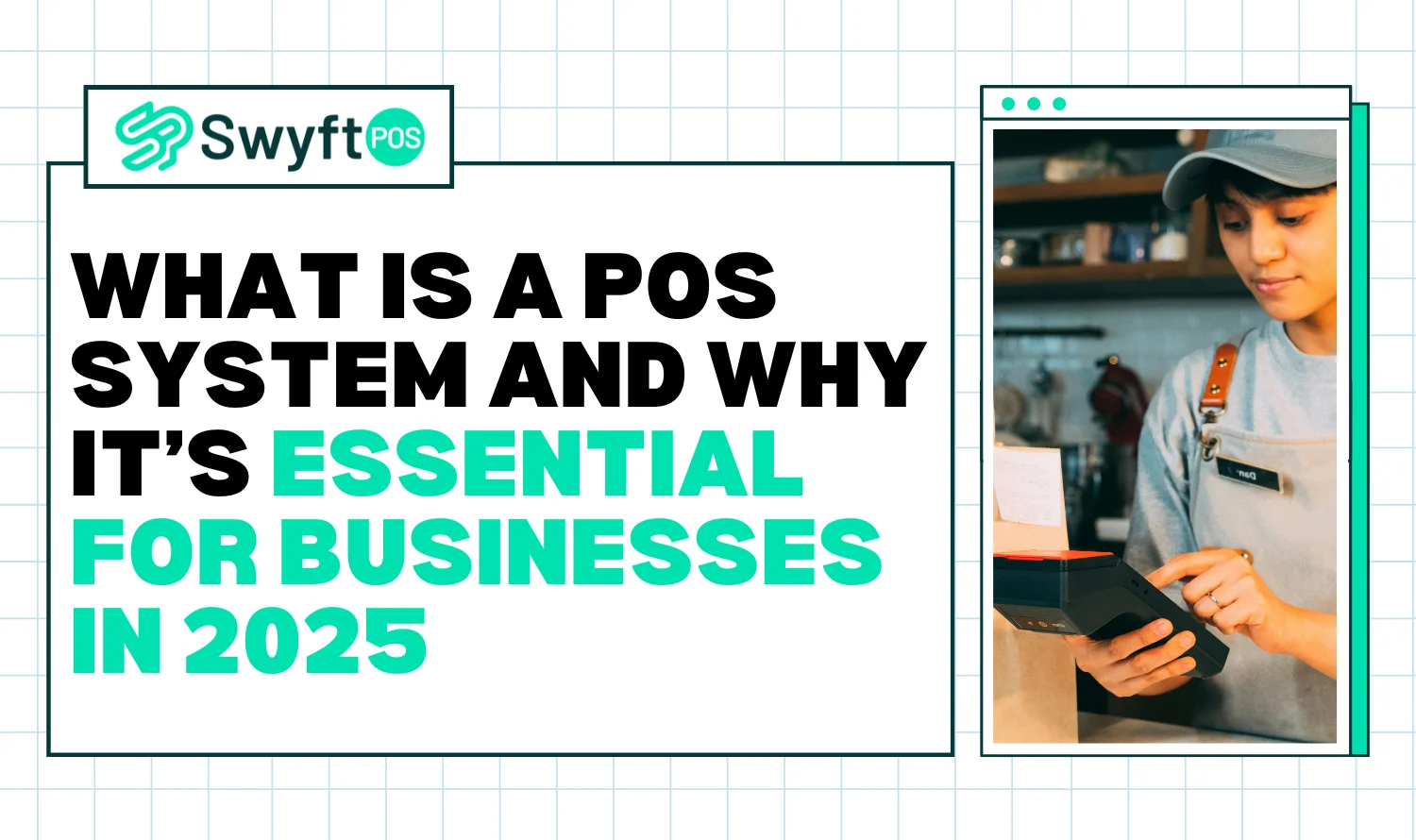Picture this: it’s 8 a.m. at a bustling coffee shop. Orders pile up, baristas are moving fast, and payments need to flow without delay. A few miles away, a small online boutique is packing orders for nationwide delivery. Across town, a hybrid retailer manages both walk-in shoppers and online sales at once.
Different businesses. Different models. Yet, they all rely on one invisible backbone to keep things running smoothly. Every order, sale, and update connects through the same system. From the customer tapping a card to the stock update in the backend, nothing happens without it.
This is where the story of modern business begins. In 2025, running a company without this tool would feel like driving blind. The cash register is history. Today’s system is intelligent, connected, and built for speed. According to this detailed analysis on ProQuest, businesses adopting modern POS systems see significant gains in efficiency and customer experience. Later in this article, we’ll break down the POS system’s meaning and take a closer look at how POS systems function in everyday business settings.
For now, just remember this: no matter the size of your business, the right POS system is the difference between staying afloat and moving ahead.
Understanding the POS System Meaning

Before diving into the technical details, it helps to step back and see how far POS systems have come. As explained in this Wikipedia overview of Point of Sale, these systems have evolved from simple cash registers to powerful, integrated solutions. Understanding the upgrades explains why the “POS system meaning” today is bigger, smarter, and more essential than ever.
A Shift from “Cash Registers” to “Digital Hubs”
Think back to the traditional cash register. It rang up sales, printed receipts, and held cash. That was the entire story. Fast forward to 2025, and the picture looks very different. A modern POS screen isn’t just a till — it’s the control center of the business.
So, what does the POS system mean in simple terms? It’s the platform where every sale meets the systems that run your business. Instead of being just a payment tool, it connects sales, inventory, customer data, and even staff schedules. Think of it as a digital hub, not just a machine that takes money.
For businesses, that change matters. It’s no longer about ringing up a purchase. It’s about knowing which product is selling fastest, who’s buying it, and when to restock. The cash register could never do that. A modern POS system does it all in real-time.
Core Functions Businesses Can’t Ignore
A complete POS system handles much more than transactions. Here are the functions that matter most:
Inventory management
Automatic updates when items sell. Alerts when stock runs low.
Payment processing
Accepts cards, mobile wallets, and new methods like “buy now, pay later.”
Customer tracking
Stores buy history for loyalty rewards and personalized offers.
Staff management
Tracks employee logins, shifts, and performance.
Reporting and analytics
Generates instant reports for smarter decisions.
POS System Meaning in a Nutshell
| Feature | Old POS (Cash Register Era) | New POS (2025) |
| Sales | Manual entry | Automated + AI |
| Inventory | Stock counts by hand | Real-time tracking |
| Customer Data | Paper receipts | Digital profiles |
| Payment Options | Cash/Card only | Contactless, mobile wallets, BNPL |
How a POS System Works in 2025
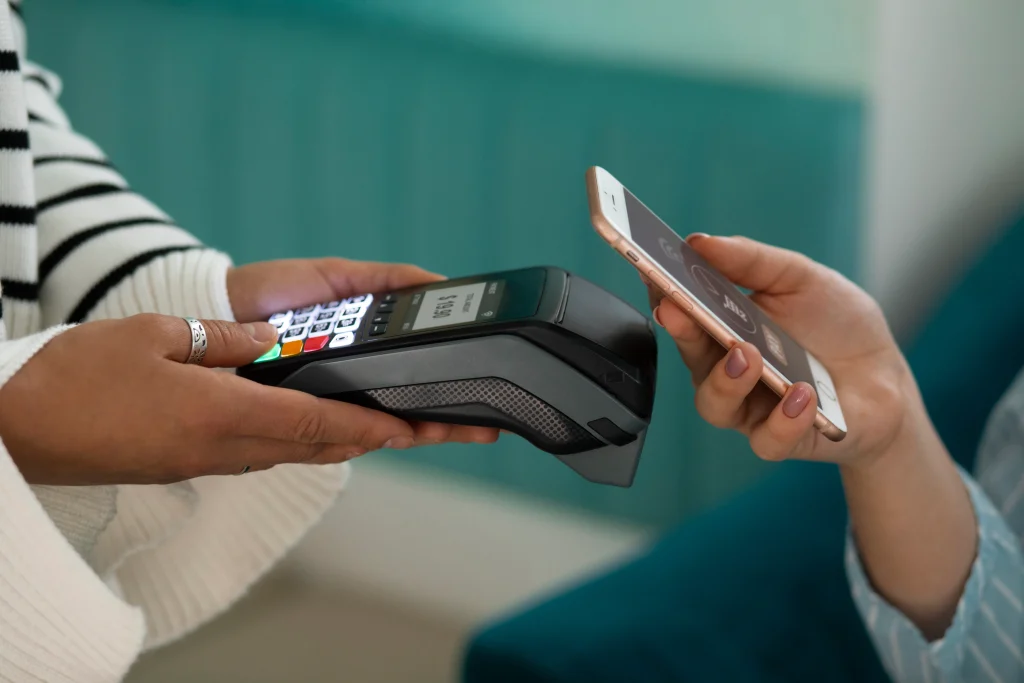
Understanding the importance of a POS system helps make sense of why it is so vital today. Modern systems are no longer bulky machines that sit behind a counter. They are connected networks built to handle every aspect of a transaction. Let’s look behind the screen to see what powers them.
The Tech Engine Behind the Screen
A POS setup has two main parts: hardware and software. Hardware can be terminals, barcode scanners, tablets, or mobile card readers. Software ties it all together, storing sales, updating inventory, and processing payments.
In 2025, the real power comes from cloud integration. This means data is not stuck on one computer but is stored online for access anywhere. Mobile terminals let staff take payments on the go. That cuts waiting lines and keeps customers moving.
On top of that, AI-driven analytics are now common. The system doesn’t just track sales. It learns patterns, predicts trends, and helps businesses prepare before problems arise. That kind of foresight makes a POS much more than a checkout tool.
For a deeper look at hardware and software choices, check out our blog: Mobile POS vs. Traditional POS: Which One is Better?
The Workflow Example
The best way to understand how a POS system works is by following a single sale. Picture a customer buying a product. The POS doesn’t just take the payment. It also updates the stock, records the buyer’s profile, and sends the data to reports. All of this happens in seconds.
Visual Breakdown
- Step 1: Item scanned or added.
- Step 2: Price + tax calculated instantly.
- Step 3: Customer pays via preferred method.
- Step 4: Inventory updated in real-time.
- Step 5: Business gains instant analytics.
That smooth workflow is what makes the system so effective. It’s simple for the customer but powerful for the business.
Why POS Systems are Business Essentials in 2025
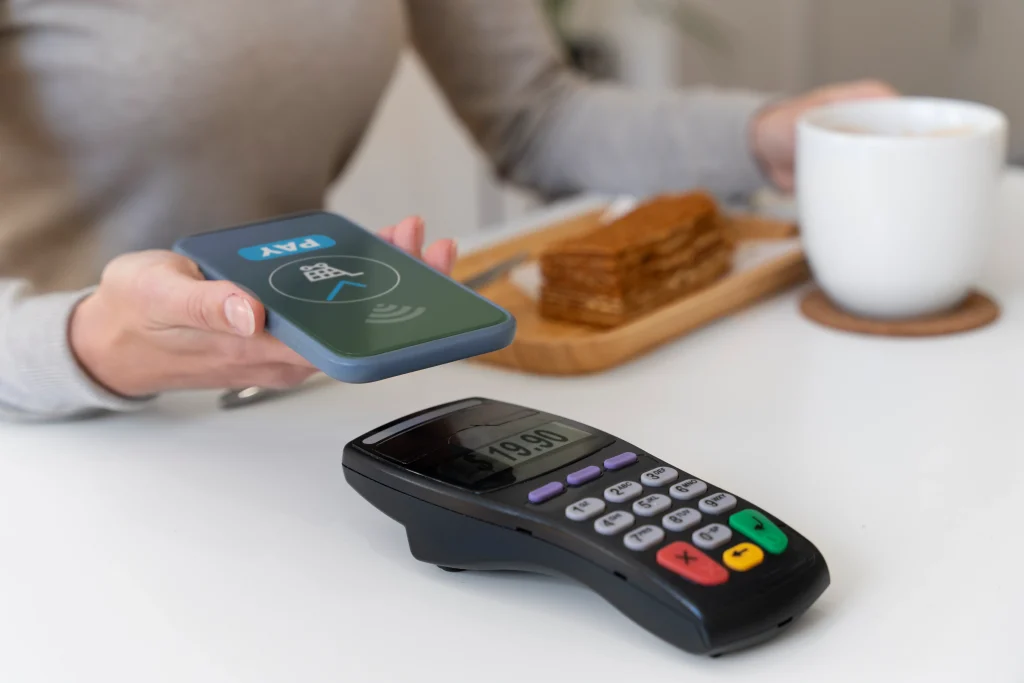
Now that we’ve seen how the POS system works, the next question is why businesses can’t operate without it in 2025. The answer lies in how people shop, how data is used, and how work gets done.
Adapting to the Omnichannel Era
Shoppers no longer stick to one channel. They browse online, buy in-store, and pay with mobile wallets. A modern POS links all those channels. That way, the stock on your website matches what is in your store. Customers can buy anywhere and still enjoy the same smooth experience.
It’s not just retail that’s evolving, hospitality is changing too. Restaurants are enhancing the dining experience through tableside POS solutions, creating faster service and a smoother guest journey.
Data as the New Business Currency
The POS system’s meaning goes far beyond sales. Every tap, swipe, and order builds a trail of data. Businesses use that data to learn what customers want. It also helps predict when stock will run out. That means shelves are full when buyers are ready, and waste is reduced.
Personalized offers are another benefit. A customer who buys coffee twice a week can get loyalty points or discounts at the right time. These small touches build trust and repeat sales.
Efficiency and Staff Productivity
A POS reduces repetitive work. It handles reports, updates inventory, and processes payments. This frees staff to focus on the customer instead of paperwork. That extra attention improves service, which in turn improves sales.
Curious about tools that make day-to-day operations easier? Read: POS System Features that Make Running a Store Less Stressful in 2025
5 Business Pain Points Solved
Every business faces challenges that slow things down or frustrate customers. The good news is that modern POS systems are built to tackle these problems head-on.
- Long checkout lines → mobile POS kiosks
- Human errors in stock → auto-syncing inventory
- Limited payment methods → contactless + BNPL
- Lack of customer loyalty → CRM integration
- Slow reporting → real-time dashboards
When you add it all up, the POS becomes more than technology — it is the foundation of modern business operations. If speed is your top concern, check out our detailed guide on the Top 10 Wireless POS Systems for Fast Transactions, designed to help businesses process payments quickly and keep customers moving.
Creative Industry Snapshots

Every industry has its own challenges, but the right POS setup adapts to each. What works for a café might differ from what a salon needs. Still, the core idea stays the same: smoother operations and happier customers.
Cafés and Restaurants
For a café, speed is everything. Customers want their morning coffee without delays. A modern POS connects order-taking with kitchen displays. That reduces errors and gets drinks out faster.
Loyalty programs are another big benefit. Imagine a system that tracks a customer’s daily coffee habit. The POS then offers a free drink after ten purchases. Simple perks like these keep people coming back.
If you’re in the food business, don’t miss our complete guide on how to choose the right POS system for your restaurant to find the perfect solution for smooth service and happy customers.
Retail Fashion Stores
Fashion retailers juggle both online and in-store stock. Without a solid POS, shelves can be empty or overloaded. Modern systems sync inventory across channels. That means what customers see online matches what’s on the rack.
Some stores now use smart mirrors linked to POS systems. A shopper can scan an outfit, see style suggestions, and order sizes directly. The POS tracks the request and automatically updates the stock.
Many retailers are also going mobile to make checkout faster and more flexible. Learn more about this trend in our guide on what an mPOS is and why your business needs it.
Service-based Businesses (Salons, Gyms)
For salons and gyms, the POS system extends into scheduling. Clients book services, choose staff, and pay in one flow. Missed bookings drop because reminders are built into the system. Staff can track their hours while customers enjoy easier check-ins.
To understand the backend benefits and see how it all connects, check out our guide on integrating POS with accounting: benefits and tools.
POS Impact across Industries
| Industry | Pre-POS Challenges | 2025 POS Benefits |
| Cafés | Slow service, wrong orders | Faster checkout, loyalty apps |
| Retail | Over/under-stocking | Real-time tracking, omnichannel |
| Salons | Missed bookings | Automated scheduling + reminders |
These snapshots show how flexible POS systems have become. They don’t just support sales. They adapt to the unique needs of each business type.
Want to explore all the solutions we offer? Check out our POS system solutions to see how we can help streamline your business operations.
Common Myths About POS Systems
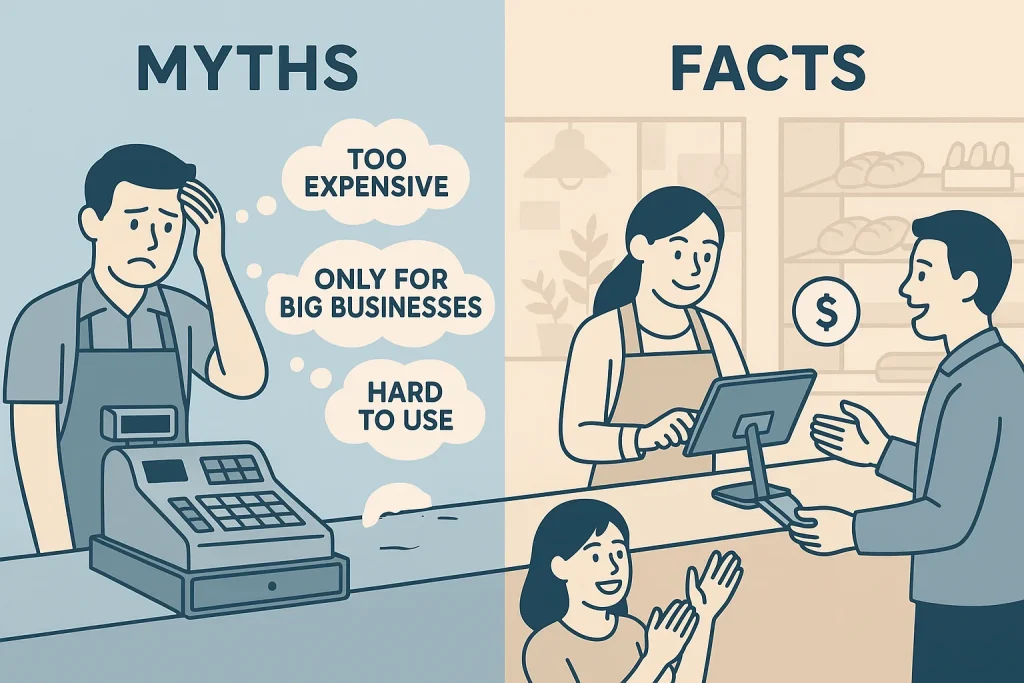
Even with clear benefits, many businesses still hesitate. Misconceptions about cost, complexity, and size often hold them back. Let’s clear up the most common myths.
“Too Expensive”
Many owners think POS systems cost too much. In reality, most platforms now use subscription pricing. A business pays monthly or yearly, based on its size. That makes it affordable for small shops and growing retailers alike.
If you are wondering about the actual cost, take a look at our detailed guide: The Cost of POS Systems in 2025: A Complete Breakdown to understand pricing models and what factors impact the total expense.
“Only for Big Businesses”
Another myth is that POS is only for large stores. Today, even food trucks and freelancers use POS apps on mobile devices. It’s as useful for a one-person bakery as it is for a national chain.
“Hard to Use”
Older systems were bulky and complex. Modern POS tools are mobile and intuitive. Staff can learn them in minutes, not days. Training costs are lower, and adoption is quicker.
By separating fact from fiction, it’s clear that modern POS solutions fit businesses of all sizes.
Choosing the Right POS System in 2025
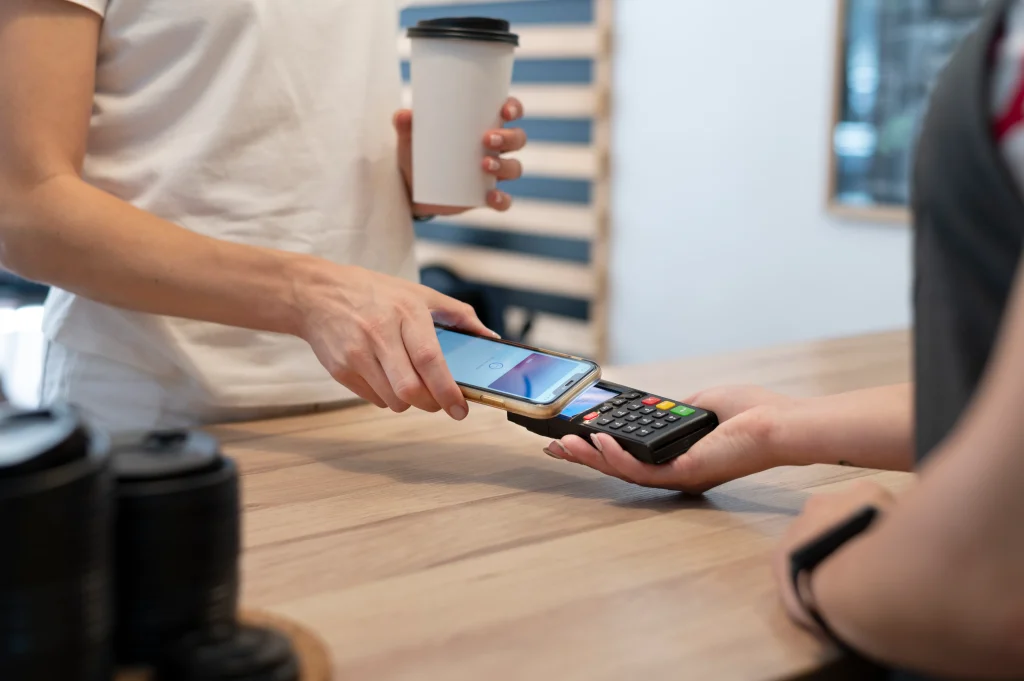
Picking a POS should feel structured, not risky. Start with goals. Then match features to daily work.
Features to Evaluate
- Cloud-based scalability. Add users and stores without friction.
- Omnichannel integrations. Sync ecommerce, marketplaces, and in-store stock.
- Strong analytics and AI. Get SKU trends and demand forecasts.
- Multiple payment methods. Accept EMV, contactless wallets, and BNPL.
Ask about offline mode. Cards should work during internet outages. Check PCI compliance. Confirm tokenization and end-to-end encryption. Review role-based permissions. Protect access to sensitive screens. Verify receipt options. Send email or SMS with a tap.
Talk to support before buying. Measure response times and channels. Ask for uptime history. Look for 99.9% or higher. Request real references. Speak to stores like yours.
Red Flags to Avoid
- Limited integrations. Manual exports waste time and cause errors.
- Outdated hardware. Slow chips create queues and failed swipes.
- Hidden fees. Review processing, support, and add-on costs.
A solid choice should reduce admin work. It should speed payments. It should scale with you.
Still unsure which type of POS fits you? Compare models in: Cloud POS v. On-Premise: What’s Right for Your Business?
The Future of POS Beyond 2025
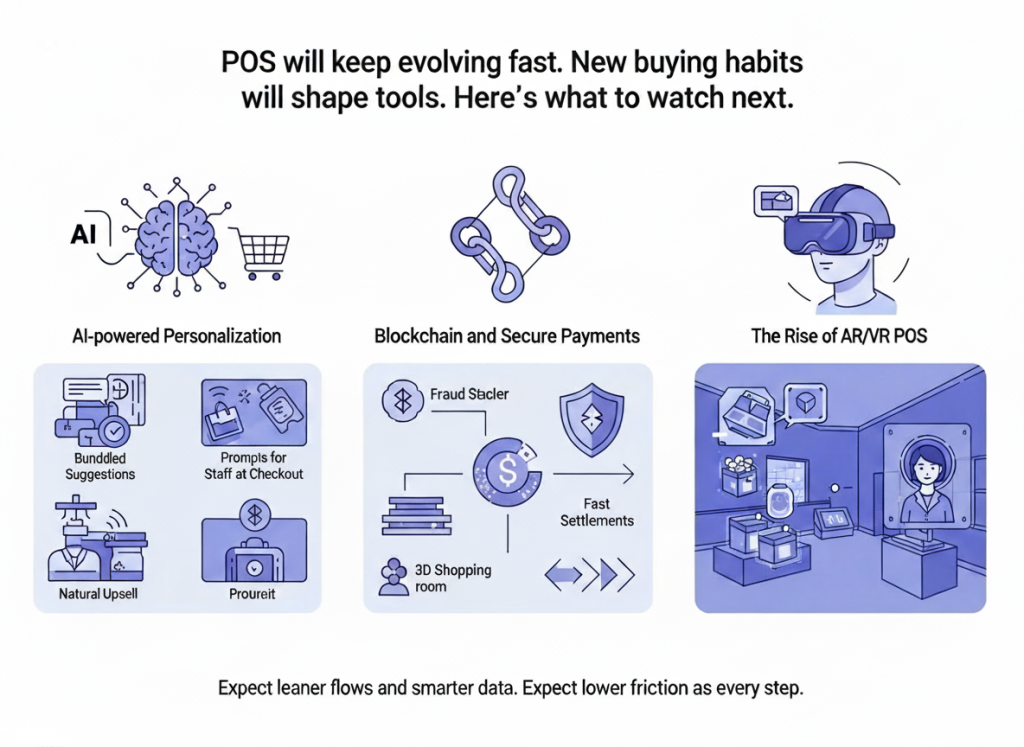
AI-powered Personalization
AI will tailor offers in real time. It will suggest bundles by history. It will time rewards for repeat buyers. Staff will see prompts at checkout. Upsells will feel natural and helpful.
Blockchain and Secure Payments
Blockchain can add payment transparency. It can reduce fraud and chargebacks. Settlement can become faster and cleaner. Audits become simpler with shared ledgers. Trust improves for both sides.
The Rise of AR/VR POS
Try-ons will move into virtual rooms. Shoppers will view items in 3D. Checkout can happen inside that space. Staff can assist from remote locations. Inventory updates will still happen instantly.
Expect leaner flows and smarter data. Expect lower friction at every step.
Frequently Asked Questions
1: What does the POS system mean?
It’s the checkout. The point where sales happen, payments are made, and records are kept.
2: How POS system works in a store?
Think of it as a smart cash register. You scan an item, the system adds it up, the customer pays, and your inventory updates right away. That way, you know what sold and what’s left without guessing.
3: Do small businesses really need a POS?
They do. Even a small café or shop benefits. You’ll track sales, handle cards, and cut down on mistakes that happen with paper notes or old registers. It keeps things simple and clear.
4: What features should I look for in 2025?
Focus on what makes running your shop easier. Mobile payments are a must. Syncing with online orders helps. Reports should be clear, not confusing. And choose a system that works smoothly on phones or tablets.
5: Are POS systems hard to use?
No. Most feel as easy as using a phone app. Staff usually get the hang of it in minutes.
Key Takeaways
We defined the POS role for today’s world. It is the digital nerve center for sales. It unites payments, stock, customers, and staff.
We also walked through its operation. Scanning leads to pricing, payment, and synced data. Reports then guide buying and staffing choices. That invisible loop keeps the store moving.
Adopt a system that fits your model. Keep the stack simple and reliable. Train teams well and review reports often. Do that, and you gain speed, accuracy, and loyal customers.
Choosing the right POS should not be guesswork. Swyft POS helps you identify, procure, and install the best system for your business, backed by expert consultation at every step. Let us simplify the process so you can focus on growth.

